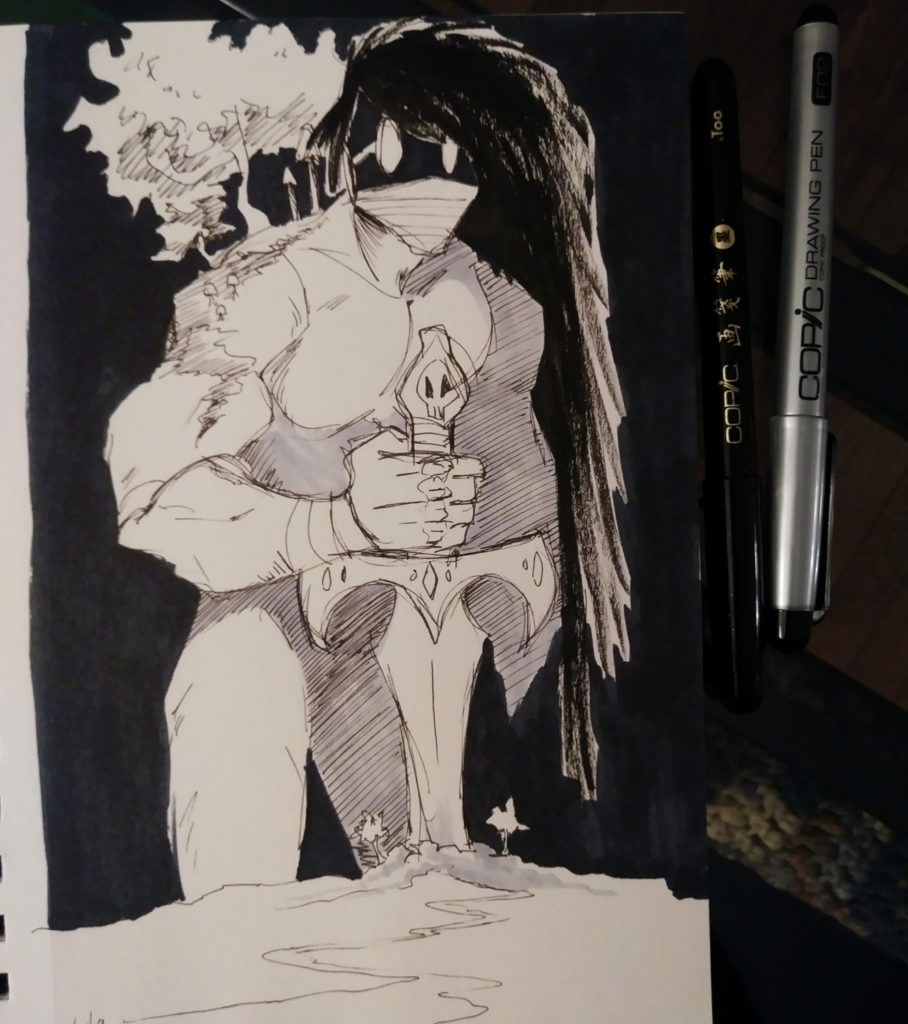
I drew this Earth Giant back in January of 2019. Mostly to play with shadows and inks.

I drew this Earth Giant back in January of 2019. Mostly to play with shadows and inks.
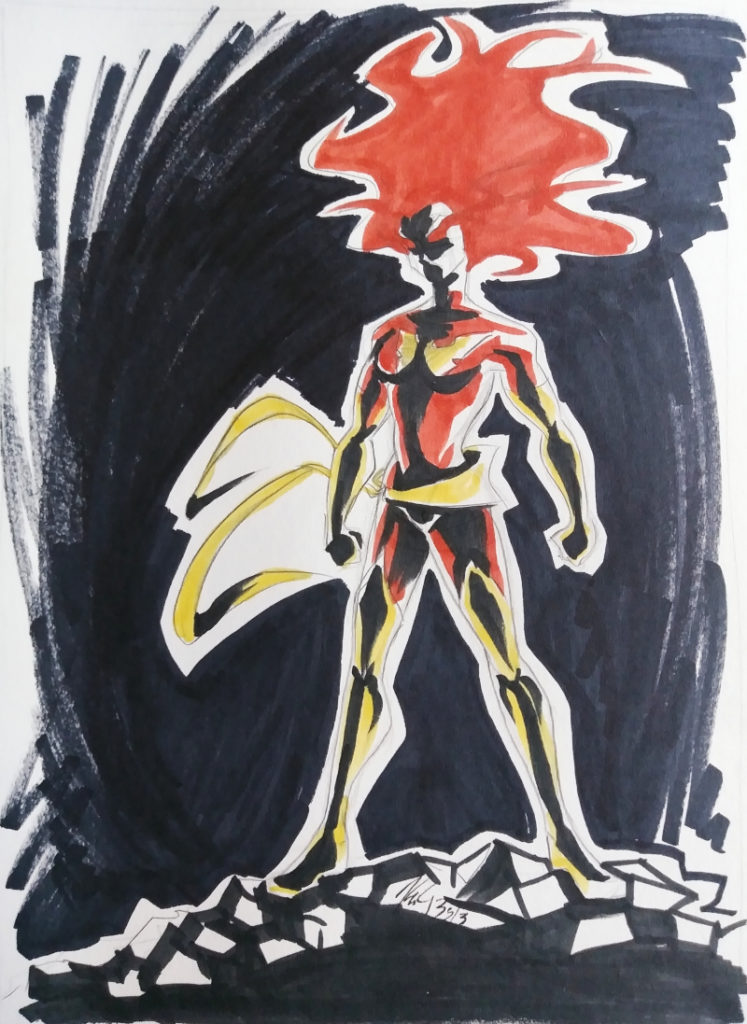
Today’s Throwback Thursday is going to reveal how much of an absolute hipster I am. Because here’s why I drew Phoenix from X-Men:
I’ve never read the comics that featured Phoenix. I only ever saw X-Men 3 for context for who Phoenix is. (And looking back on it, X-Men 3 wasn’t that good).
I drew Phoenix because of the aesthetic.
I wanted to play around with shadows and light on a superhero figure, and this sketch was the result. This was drawn back in 2013, so I’ve improved since then.
But yep – I’m a freakin’ hipster. Only hipsters would draw a character because they looked cool, not because of anything actually pertaining to the character.
So please forgive 2013 me.
Still, I wanted to share this so a) you could learn from my mistake, and b) because I’m actually pretty pleased with how this sketch came out.
If I ever do a redraw of this, I would change the character to someone whom I actually know and like.
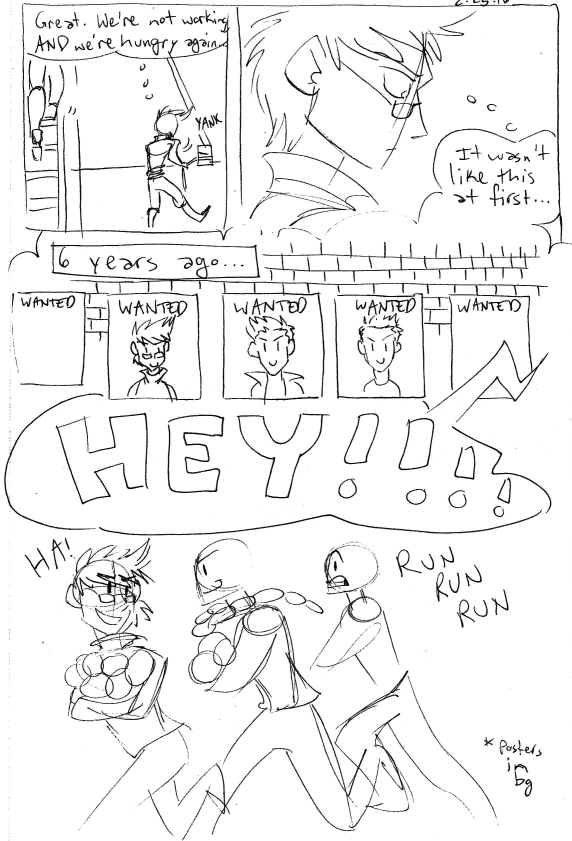
I’m beginning a new blog post series. Called Writing for Comics 101.
I had an epiphany recently, thanks to some new work I do. See, I’ve been hired as the Chief Creative Officer at NeverEnding. (Find out more about NeverEnding over on their website.) This new work has gotten me in contact with artists, because we’re looking to grow the team a little bit.
So I’ve been talking with other artists a lot more often. That’s nice, considering that the coronavirus pandemic has shut down convention season. So my options of chatting with other artists got a bit more limited.
That said, I realized something talking with some of these folks, pre-virus and presently. The thing is, many of them start as comic artists…but then they get frustrated at the lack of readers, so they leave the business. Many of these artists have moved on to just freelancing in general. There’s nothing wrong with that! But it made me realize something.
And the thing is, many of these former comic artists…are not great storytellers.
This gave me the inspiration to start the Writing for Comics 101 blog post series. I’m going to keep this series to 4 posts. If there’s enough demand for it, I’ll expand it. But 4 posts (not counting this one).
I hope with this short blog post series that I can help my fellow artists get more confident in their writing ability. I KNOW you can draw AND write killer stories. You just need more guidance than Google can provide.
So stick with me. And be sure to sign up for the email newsletter so you can keep up with this series as it posts.
That’s all for now. Thank you for reading!
You. Are. Awesome.
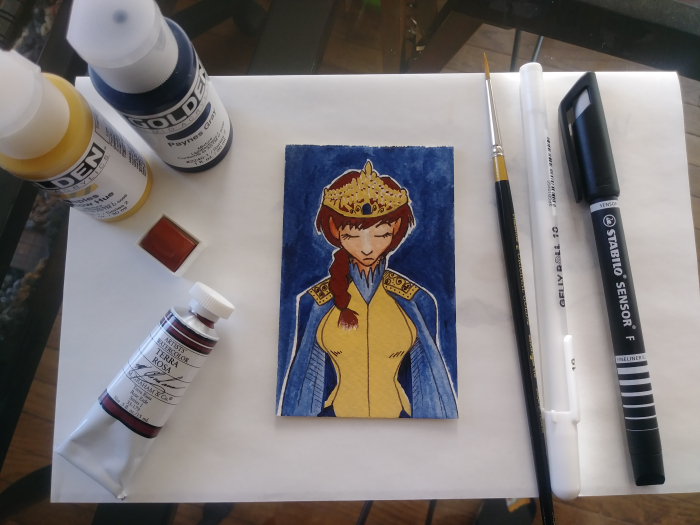
As far as platforms go, Ko-Fi and Patreon have similar goals: make it easy for fans to support creatives. I get the impression that some folks use one but not the other. I DARE to use both. So how do I do it?
Ko-Fi (I think it’s pronounced ‘coffee,’ and you’ll see why) is a platform that lets you donate the price equivalent of a cup of coffee (get it?) to your favorite creative person. By giving, you support the creative, AND you get access to some supporter-exclusive posts.
Patreon lets fans subscribe to their favorite creatives by pledging a specific amount of money, to give either each month, or for each project. You get rewards in exchange for how much you give. The more you give, the more rewards you get.
Ko-Fi also has an option to let folks subscribe to their favorite creatives with a monthly donation, but this option is only available if the creative pays for a Ko-Fi Gold plan. Otherwise, it’s just one-time donations.
Patreon grandfathered me into a particular package deal, because I had been on the platform for so long.
As of this writing, Patreon has 3 plans, depending on how big your team is. If it’s just you, you get a simple button and you don’t break down your rewards like tiers (like KickStarter does). If you’re a handful of people, but not a huge team, you can get on the Founder Level, which is what I have. This allows patrons to select their level of patronage from the options you provide just like you would with KickStarter. Patreon also has a level above Founder, but that’s intended for creative teams that are 10+ people, or folks who run a business with subscription boxes that ship.
In the indie comics verse, I’ve seen some folks use one platform, but not the other. More often, I see both. I decided to be kooky and use both platforms, as well.
Admittedly, I sought out using Ko-Fi to fund a side project. Then the side-project fell through. So then I thought, “Maybe I’ll offer this as an alternative to Patreon! I’ve seen some people’s eyes roll at the mention of Patreon. Maybe they just need an option that’s different.”
But after having received a few donations through Ko-Fi, and after having been on Patreon for many years, I’ve discovered this in my experience:
The support I get from Patreon is for my art. The gifts I’ve received from Ko-Fi come with notes thanking me for my blog.
Yes, I DO write. I’ve done the National Novel Writing Month Challenge two years in a row, and I’m hoping that this year will be my third.
And obviously I write blog posts. And, curiously, I’ve had patrons on Patreon ask me to make poetry for them.
So that’s the plan moving forward!
If you would like to support the art-side, check out Patreon. Heads up – I will be revamping the reward tiers and promotional art soon.
If you would like to support the blog, check out the Ko-Fi. I have new rewards available that are writing-specific. You can give once OR give monthly (I opted for the Ko-Fi Gold).
That’s all for now. Thank you for reading!
You. Are. Awesome.
I’m in charge of a LOT of shit. From working a part-time side hustle (that sometimes works me full-time hours), to making comics for myself AND clients, to commissions and livestreams, I have a lot going on at any given time. And that’s not counting my volunteer work or recreational time. So how do I stay so productive?
Let’s take a peek into my bullet journal.
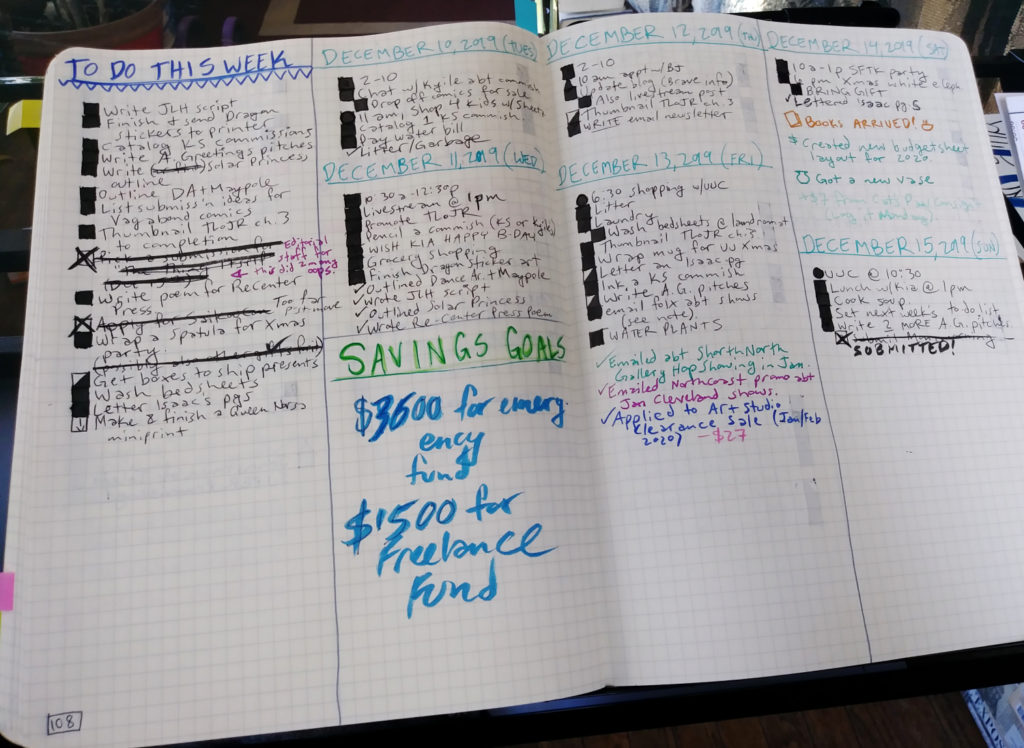
I started keeping a full-on planner back in 2017. But the planner wasn’t as customizable as I wanted it to be. So for 2018 I got a Moleskin graph paper notebook and started keeping my planner that way.
So I studied some layouts other people were making, sketched out some of my own, and put some of those layouts to use for 2019 in my new bullet journal.
Now, I opted for a BIG journal this year, because I wanted to see my full week in one two-page spread. I gauge my work by what I get done in a given week. This is because:
Admittedly, it took a while to get to how I wanted to handle my week. But now I have a system that works.
I make one column of all the objectives I want to accomplish in that week. (My week runs from Monday to Sunday. I keep Sunday as a rest day/day off AS MUCH AS POSSIBLE).
The remaining columns are dedicated to making my to-do lists for the days of the week. I used to use a grid system, but I like the columns better. Columns can keep things condensed, while also allowing for some days to be more productive than others.
I primarily use my bullet journal to track my to-do lists. My calendar and notebook are all digital. (But I DO need a new physical address book. My current one is too tiny for all the contacts I have.)
I DO NOT keep a calendar in my bullet journal. Some people do. I cannot. I use Google Calendar rather than using a bullet journal calendar and a digital one. When I had 2 calendars, I would accidentally double-book myself for work. And given how my schedule can change at the drop of a hat, a digital calendar is more customizable than a physical one.
That’s all for today!
Would you like to see more of my bullet journal? Want to talk about yours? Let me know in the comments. I love talking about productivity.
Thank you for reading!
You. Are. Awesome.